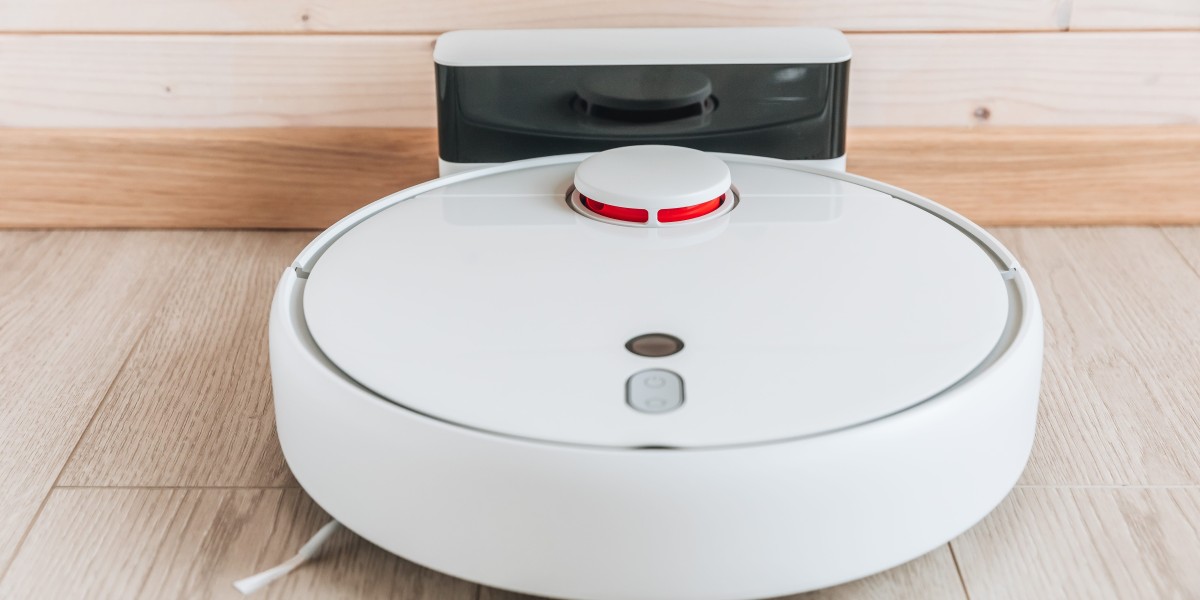The Rise of the Robots: A Comprehensive Guide to Robotic Hoovers
In today's busy world, effectiveness and benefit are highly valued. We look for solutions that streamline our daily routines and free up our precious time. One such innovation that has progressively gained appeal in homes across the globe is the robotic hoover, frequently lovingly described as a "robovac." These ingenious gadgets are no longer futuristic novelties however rather useful tools transforming the way we approach family cleaning. This post explores the world of robotic hoovers, exploring their functionality, advantages, essential features to think about, and what makes them a rewarding addition to the contemporary home.
Gone are the days of carrying heavy vacuum cleaners and by hand browsing every corner of your home. Robotic hoovers provide an automatic cleaning option, taking the task of vacuuming off your hands. But how precisely do these compact machines work, and are they really as efficient as standard approaches? Let's unwind the intricacies of robotic hoovers and discover why they are ending up being an indispensable part of modern living.
Comprehending the Technology Behind Robotic Hoovers

At their core, robotic hoovers are advanced pieces of innovation designed to autonomously navigate and clean your floorings. They attain this through a combination of sensors, algorithms, and cleaning systems. While specific technologies differ between designs and brand names, some typical elements underpin their operation:
Navigation Systems: Robotic hoovers utilize various navigation systems to map and traverse your home. Older designs often make use of a bump-and-go technique, depending on physical contact with obstacles to change instructions. Advanced models make use of sophisticated innovations like:
- LiDAR (Light Detection and Ranging): This laser-based system produces a comprehensive map of the environment, permitting efficient course preparation and organized cleaning patterns.
- Visual SLAM (Simultaneous Localization and Mapping): Using video cameras, these robots construct a visual map of your home, allowing them to understand their place and navigate intricate designs.
- Infrared Sensors: These sensing units identify obstacles and edges, avoiding the robot from dropping stairs or bumping into furnishings too forcefully.
Cleaning Mechanisms: Robotic hoovers are geared up with numerous cleaning tools to effectively get dust, debris, and pet hair. These normally consist of:
- Rotating Brushes: These brushes, often positioned below the robot, loosen dirt and sweep it into the suction course. Some models have side brushes to reach edges and corners more effectively.
- Suction Power: A motor creates suction to raise particles into the dustbin. Suction power varies significantly in between models and is a vital consider cleaning efficiency, particularly on carpets.
- Filters: Robotic hoovers typically incorporate filters, such as HEPA filters, to trap fine dust particles and allergens, contributing to improved air quality in your house.
Smart Features: Modern robotic hoovers are increasingly incorporated with smart innovation, boosting their functionality and user experience. These functions can include:
- Smartphone App Control: Allows you to begin, stop, schedule, and display cleaning cycles from another location.
- Voice Control Integration: Compatibility with voice assistants like Alexa or Google Assistant for hands-free operation.
- Zoned Cleaning and No-Go Zones: Ability to define particular locations for cleaning or to leave out specific zones from the robot's path.
- Multi-Floor Mapping: Advanced robots can store maps of several floorings in your home, adapting their cleaning method to each level.
- Automatic Docking and Charging: Robotic hoovers automatically return to their charging dock when the battery is low, guaranteeing they are constantly ready for the next cleaning cycle.
The Benefits of Embracing Robotic Hoover Technology
The appeal of robotic hoovers extends beyond their technological novelty. They provide tangible benefits that streamline household tasks and improve daily life:
- Time Savings and Convenience: The most substantial advantage is the time released up from manual vacuuming. Robotic hoovers can clean your floorings while you are at work, running errands, or just unwinding, enabling you to focus on more satisfying activities.
- Constant Cleanliness: By scheduling regular cleaning cycles, robotic hoovers keep a constant level of cleanliness, preventing dust and debris accumulation and keeping your home feeling and look fresher.
- Lowered Effort and Physical Strain: For people with movement issues, back problems, or simply those who dislike the physical effort of vacuuming, robotic hoovers offer a welcome alternative. They remove the need to press and pull heavy equipment, making cleaning less physically requiring.
- Pet Hair Management: Robotic hoovers are particularly skilled at tackling pet hair, a consistent obstacle in many families. Routine robotic cleaning can considerably reduce pet hair accumulation on floors and carpets, contributing to a cleaner and much healthier environment for allergy patients.
- Peaceful Operation (in some designs): Many modern-day robotic hoovers are designed to run at fairly low noise levels compared to standard vacuum cleaners, enabling them to clean without interrupting family activities or discussions.
- Improved Air Quality (with HEPA filters): Models geared up with HEPA filters can trap fine dust particles, allergens, and pet dander, possibly enhancing indoor air quality, especially useful for individuals with allergies or breathing sensitivities.
Key Features to Consider When Choosing a Robotic Hoover
Picking the right robotic hoover includes considering your specific needs and home environment. Here are some important features to assess before making a purchase:
- Navigation Technology: For larger or more complex homes, advanced navigation systems like LiDAR or visual SLAM are extremely suggested for efficient and organized cleaning. Bump-and-go navigation is typically much better fit for smaller sized, easier areas.
- Suction Power: Consider the kind of floor covering in your home. Houses with mainly hard floorings might require less suction power, while homes with carpets, especially thick carpets, will take advantage of designs with greater suction capabilities.
- Battery Life and Coverage Area: Ensure the battery life is sufficient to clean up the desired location on a single charge. Producers often define the approximate cleaning location coverage per charge cycle. For bigger homes, look for robots with longer battery life or those efficient in automatic recharging and resuming cleaning.
- Dustbin Capacity: A bigger dustbin capability minimizes the frequency of emptying. Consider your home size and the level of dust and particles usually gathered. Some advanced models now use self-emptying dustbins, further minimizing manual intervention.
- Smart Features and App Control: Evaluate the level of smart features that line up with your requirements. Mobile phone app control, voice control, zoned cleaning, and no-go zones can considerably improve the user experience and modification.
- Brush Types and Design: Consider the brush types and design, especially if you have family pets or are worried about fragile flooring. Rubber brushes are frequently preferred for pet hair, while softer brushes may be better matched for delicate difficult floors.
- Height Profile: If you have low-profile furnishings, check the height of the robotic hoover to ensure it can browse under sofas, beds, and other furniture.
- Price and Budget: Robotic hoovers vary in price from affordable alternatives to high-end designs with sophisticated functions. Determine your budget plan and prioritize features that are crucial for your requirements.
Kinds Of Robotic Hoovers: Beyond Basic Vacuuming Robot
The robotic hoover market has actually broadened beyond basic vacuuming functionalities, providing specialized models to accommodate diverse cleaning requirements:
- Vacuuming Robots: These are the most typical type, focusing exclusively on dry vacuuming. They work at choosing up dust, debris, and pet hair from numerous floor types.
- Vacuuming and Mopping Robots (2-in-1): These flexible designs combine vacuuming and mopping functionalities. They generally vacuum very first and then mop utilizing a moist pad or water tank. While practical, their mopping abilities are typically lighter and better matched for upkeep cleaning instead of deep cleaning.
- Robotic Mops: Specifically created for mopping hard floors, these robots focus entirely on wet cleaning and work at removing spots and spills from tile, laminate, and wood floorings.
- Specialized Robots (e.g., Window Cleaning Robots, Pool Cleaning Robots): While less typical, specialized robotic cleaning services are likewise emerging for particular tasks such as window cleaning and pool cleaning.
Maintaining Your Robotic Hoover for Longevity
To ensure your robotic hoover continues to perform efficiently and lasts for several years to come, regular maintenance is essential:
- Emptying the Dustbin: Empty the dustbin regularly, ideally after each cleaning cycle, to preserve suction performance and prevent obstructing.
- Cleaning Brushes: Remove and clean up the brushes regularly to get rid of twisted hair, fibers, and particles accumulation. This will make sure effective dirt pickup.
- Cleaning Filters: Clean or replace filters according to the producer's suggestions. Blocked filters reduce suction power and can affect air quality.
- Wiping Sensors: Keep sensors tidy and devoid of dust and debris to guarantee precise navigation and challenge detection.
- Inspecting Wheels and Rollers: Inspect wheels and rollers occasionally to get rid of any twisted hair or blockages that might prevent motion.
- Changing Parts as Needed: Over time, particular parts like brushes and filters will require replacement. Follow the producer's guidelines for replacement schedules.
Advantages and disadvantages of Owning a Robotic Hoover
Like any innovation, robotic hoovers have their advantages and drawbacks. Understanding these can assist you make a notified choice:
Pros:
- Convenience and Time Savings
- Constant Cleaning
- Lowered Physical Effort
- Reliable Pet Hair Management
- Smart Features and Automation
- Improved Air Quality (with HEPA filters)
Cons:
- Higher Initial Cost Compared to Traditional Vacuums
- May Not Replace Deep Cleaning Entirely (for some models)
- Requires Regular Maintenance (dustbin emptying, brush cleaning)
- Navigation Challenges in Cluttered Environments (for basic models)
- Battery Life Limitations (for larger homes with some models)
- Potential for Getting Stuck or Requiring Intervention
The Future of Robotic Hoovers
The technology behind robotic hoovers is continuously evolving, and we can anticipate more improvements in the future. Trends to keep an eye out for include:
- Enhanced Navigation and Mapping: Even more advanced navigation systems, potentially integrating AI and artificial intelligence, will lead to smarter and more effective cleaning patterns.
- Enhanced Obstacle Avoidance and Object Recognition: Robots will become better at recognizing and avoiding challenges, including smaller things and pet waste.
- Increased Suction Power and Cleaning Performance: Manufacturers will continue to enhance suction power and cleaning effectiveness, bridging the gap with conventional vacuum.
- Self-Emptying and Self-Cleaning Features: More designs will likely include self-emptying dustbins and even self-cleaning brushes, even more minimizing user intervention.
- Combination with Smart Home Ecosystems: Seamless integration with smart home platforms and broader home automation systems will end up being much more widespread.
- Lower Prices and Increased Accessibility: As technology develops and production scales up, robotic hoovers are most likely to become more budget-friendly and accessible to a wider series of consumers.
Conclusion: Embracing the Automated Cleaning Revolution
Robotic hoovers have actually transitioned from a futuristic idea to a useful and significantly important household home appliance. They use a compelling solution for hectic people and families looking for to streamline their cleaning regimens and preserve regularly clean homes. While they may not totally replace conventional vacuum cleaners for all deep cleaning jobs, they excel at everyday upkeep, pet hair management, and offering a practical, automated cleaning service.
By thoroughly considering your requirements, home environment, and the key functions gone over, you can choose a robotic hoover that perfectly integrates into your lifestyle and transforms the way you approach family cleaning. Embrace the rise of the robots and experience the liberty and benefit of automated floor cleaning.
Often Asked Questions (FAQs) about Robotic Hoovers:
Q: Are robotic hoovers as powerful as conventional vacuum?A: While robotic hoovers have improved considerably in suction power, they usually may not match the deep cleaning power of high-end standard vacuums, especially for really thick carpets. Nevertheless, for day-to-day maintenance and general cleaning on tough floors and a lot of carpets, they are extremely efficient.
Q: How long do robotic vacuum cleaner hoovers normally last?A: The lifespan of a robotic hoover can vary depending upon the brand, model, and usage frequency. Usually, with correct maintenance, an excellent quality robotic hoover can last for 3-5 years or perhaps longer.
Q: Can robotic hoovers tidy pet hair efficiently?A: Yes, many robotic hoovers are specifically created to manage pet hair. Search for designs with rubber brushes and strong suction, which are especially reliable at getting pet hair from different surfaces.
Q: Do robotic hoovers work on carpets?A: Yes, the majority of robotic hoovers are created to work on carpets, although performance can vary depending on the carpet type and best robot vacuum cleaners uk design. Designs with strong suction and proper brush types will perform much better on carpets, particularly thicker carpets.
Q: Are robotic hoovers tough to maintain?A: Robotic hoovers need standard upkeep, such as emptying the dustbin, cleaning brushes, and cleaning or replacing filters. Nevertheless, this upkeep is typically uncomplicated and less demanding than preserving standard vacuum.
Q: How much do robotic hoovers cost?A: The price of robotic hoovers varies extensively, ranging from under ₤ 200 for standard models to over ₤ 1000 for high-end designs with sophisticated functions. The cost usually reflects the features, innovation, and cleaning efficiency provided.
Q: Can robotic hoovers damage furniture or walls?A: Modern robotic hoovers are designed to reduce bumping and accidents with furniture and walls using sensing units. While small bumps may take place, they are generally gentle and not likely to trigger damage. Advanced designs with LiDAR or visual SLAM are even much better at browsing around challenges precisely.
Q: What takes place if my robotic hoover gets stuck?A: While robotic hoovers are developed to navigate autonomously, they can sometimes get stuck, particularly in chaotic environments or on thick rugs with tassels. Many models have functions to find getting stuck and will stop cleaning and send an alert or sound an alarm.
Q: Can I schedule my robotic hoover to clean up when I'm not home?A: Yes, scheduling is a key function of most robotic hoovers. You can usually set up cleaning schedules through a smartphone app or straight on the Best robot vacuum cleaner UK, enabling it to clean while you are far from home.









